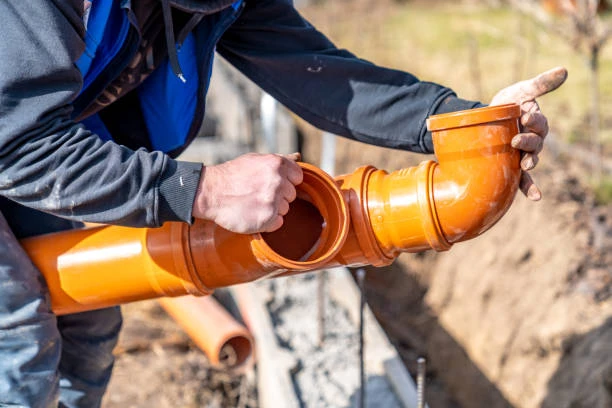In a significant development within the plumbing and construction sectors, Lubrizol, a leading name in specialty chemicals, has announced its partnership to establish a new Chlorinated Polyvinyl Chloride (CPVC) resin plant. This initiative is poised to enhance the production of fittings, which are increasingly vital in modern plumbing solutions. This article delves into the implications of this new plant, the benefits of CPVC fittings, and how this move will impact the industry as a whole.
Understanding CPVC Fittings
CPVC fittings are integral components used to connect sections of pipe in various plumbing applications. Known for their durability and resistance to corrosion, these fittings have become a preferred choice in both residential and commercial installations.
The Importance of CPVC Material
CPVC, or Chlorinated Polyvinyl Chloride, is synthesized from standard PVC through a chlorination process. This modification gives enhanced properties that make it suitable for hot water applications and other demanding environments. The growing emphasis on quality plumbing materials has driven demand for fittings, making the establishment of a dedicated resin plant timely and necessary.

Key Benefits of CPVC Fittings
- High Thermal Resistance
One of the standout features of fittings is their ability to withstand high temperatures. They can handle hot water applications up to 200°F (93°C), making them ideal for water supply lines in residential and commercial settings. - Corrosion Resistance
Unlike traditional metal fittings,fittings do not corrode when exposed to harsh chemicals or environmental conditions. This property significantly extends the lifespan of plumbing systems, reducing the need for frequent repairs or replacements. - Ease of Installation
CPVC fittings are lightweight and straightforward to install. The use of solvent cement allows for quick assembly, minimizing downtime during plumbing projects. This ease of installation is a considerable advantage for contractors looking to streamline their work. - Cost-Effectiveness
Generally more affordable than options like copper or steel, fittings present a cost-effective solution for builders and homeowners alike. The initial savings can be substantial, especially in large-scale projects. - Versatility
CPVC fittings are available in a variety of shapes and sizes, including elbows, tees, and couplings. This versatility makes them suitable for various plumbing configurations, accommodating the unique needs of each project.
The Impact of the New CPVC Resin Plant
The collaboration between Lubrizol and its partner to build a new resin plant signifies a pivotal shift in the supply chain for CPVC fittings. Here are several key impacts of this development:
Increased Production Capacity
The new resin plant will enhance production capabilities, ensuring a steady supply of resin to manufacturers of fittings. As construction projects continue to surge globally, having a reliable source of raw materials is essential for meeting market demand.
Enhanced Quality Control
Lubrizol’s commitment to quality will play a crucial role in the operation of the new plant. By implementing rigorous quality control measures, the company aims to produce high-grade resin that meets the strict standards required for plumbing applications. This focus on quality will directly benefit end-users who rely on durable and reliable plumbing products.
Sustainable Manufacturing Practices
Sustainability is becoming an increasingly important factor in manufacturing. Lubrizol has a reputation for environmentally friendly practices, and the new resin plant will likely incorporate advanced technologies to minimize waste and energy consumption. This commitment to sustainability aligns with the industry’s broader movement toward greener construction materials.
Job Creation and Economic Growth
The establishment of a new manufacturing facility will create numerous job opportunities within the local community. This influx of jobs not only supports economic development but also fosters a skilled workforce in the specialty chemicals sector, benefiting the area economically.
Innovation and Development
With a dedicated facility for resin production, Lubrizol can focus on research and development. This investment will pave the way for innovative formulations that cater to specific applications and environmental challenges, further solidifying the company’s position as a leader in the industry.
Market Trends Influencing CPVC Demand
Several market trends contribute to the rising demand for fittings:
- Growth in Construction Activities
The ongoing expansion in residential and commercial construction worldwide is a primary driver for CPVC fittings. As cities grow and housing demands increase, the need for efficient plumbing solutions becomes critical. - Regulatory Standards
Stricter building codes and regulations regarding plumbing materials are leading builders to favor CPVC fittings, which meet or exceed many safety and performance standards. - Consumer Awareness
Homeowners and builders are becoming more aware of the long-term benefits of using high-quality plumbing materials. As a result, fittings are gaining popularity due to their overall performance and reliability.
Conclusion
The partnership between Lubrizol and its ally to launch a new resin plant marks a transformative moment for the plumbing industry. With the anticipated increase in production capacity, enhanced quality control, and a commitment to sustainable practices, this initiative promises to deliver significant benefits to manufacturers and end-users alike. As demand for CPVC fittings continues to rise, this development will ensure that the plumbing industry remains equipped with the necessary materials to meet evolving needs.

Frequently Asked Questions (FAQs)
1. What are CPVC fittings used for?
CPVC fittings are used to connect sections of pipes in plumbing systems, allowing for efficient flow of water and chemicals.
2. How do I install CPVC fittings?
CPVC fittings can be installed using solvent cement. Simply apply the cement to both the fitting and the pipe, then push them together until set.
3. Are CPVC fittings safe for drinking water?
Yes, fittings are safe for potable water applications and comply with health and safety regulations.
4. What temperature can CPVC fittings withstand?
CPVC fittings can typically handle temperatures up to 200°F (93°C), making them suitable for hot water applications.
5. How long do CPVC fittings last?
When properly installed and maintained, fittings can last over 50 years, providing a durable solution for plumbing systems.